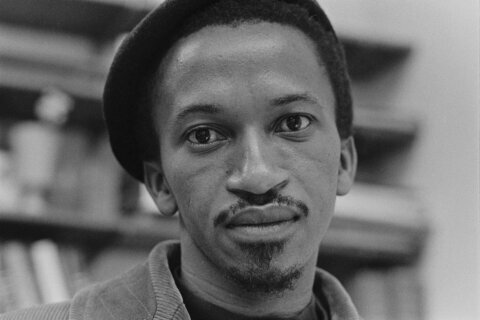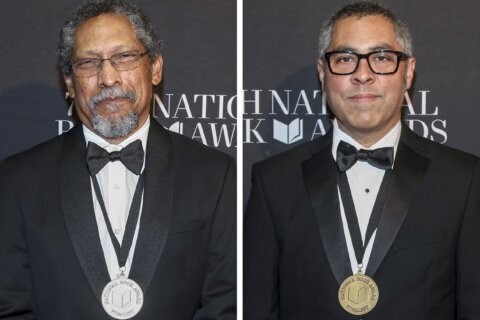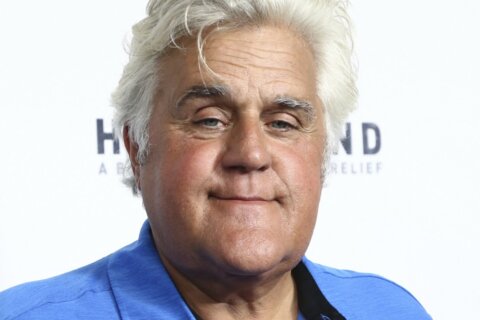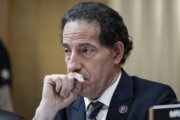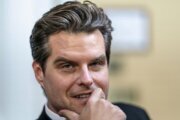WASHINGTON — The phrase “instant classic” is overused, but when it comes to the evolving sci-fi/thriller genre, few fit the dino-to-bird bill like Steven Spielberg’s “Jurassic Park” (1993).
Released the same year that “Schindler’s List” finally won him Best Director, “Jurassic Park” was the first time Spielberg returned to his “Jaws” roots. Once again, we got deadly monsters, greedy authority figures putting innocent tourists in danger, and visual symbolism that ranged from the overt (“Objects in mirror are closer than they appear”) to the subtle (Dr. Grant tying together a pair of female-end seat belts, foreshadowing female dinosaurs “finding a way” to breed).
Topping this classic was impossible even for Spielberg, who returned to direct “The Lost World: Jurassic Park” (1997), let alone Joe Johnston in “Jurassic Park III” (2001). But today, the magic of Michael Crichton is revived from fossilized amber with Colin Trevorrow’s “Jurassic World.”
Set 22 years after John Hammond’s deadly DNA experiment, the park has reopened with a new name (Jurassic World), a new manager (Bryce Dallas Howard) and a new attraction (the first genetically-modified hybrid dinosaur, Indominus Rex). This monster is custom built to satisfy our insatiable appetite for bigger, scarier and toothier — a trend that bothers the park’s raptor tamer (Chris Pratt).
“We have learned more in the past decade from genetics than the past century of digging up bones,” Howard says with wanton self confidence. Pratt takes a far different tone, warning, “You just went and made a new dinosaur? Probably not a good idea.”
The film mostly works — despite a few glaring flaws — so let’s get the nitpicking out of the way:
Originality: This fourth installment is automatically docked originality points by its very nature. As one character complains of the dino breeding, “Why does there always have to be two of everything?” Or in the case of summer blockbusters, four of everything? By the end, when the script leaves it open for future installments, we might as well call the island escape vehicle the “Sequel Copter.”
Predictability: The characters’ fates are largely predictable, from the romantic to the deadly. You can immediately tell which characters will end up in love by the time the credits roll, just like you can tell which characters will die at the hands of which dinosaurs — based on the baked-in formula.
Believability: Science fiction like this requires a certain “suspension of disbelief,” which the original film did brilliantly, offering a Mr. DNA explanation for genetic sequence gaps and a plausible scheme by Dennis Nedry (Wayne Knight) to steal the embryos. This time, a Blackwater-style villain (Vincent D’Onofrio) wages a highly unrealistic scheme to use the raptors for military invasions. “Imagine if we had these in Tora Bora,” he says to audience eye rolls. Ironically, Chris Pratt hunted Bin Laden in “Zero Dark Thirty” (2012), and D’Onofrio played Private Pyle in “Full Metal Jacket” (1987).
Body Count: Spielberg’s original featured its share of deaths, but they were few and far between, each with a gradual buildup — the Dilophosaurus spit attack, the T-Rex toilet chomp, the “clever girl” raptor hunt. In “Jurassic World,” the violence happens on a mass scale, with the I-Rex tearing through hunters with bloody abandon and pterodactyls divebombing tourists like “The Birds” (1963). The film boasts a PG-13 rating, but it may need a “Must Be This Tall to Ride” sign. As a character says in the movie, this one’s not only inappropriate for young kids, it’ll also give parents nightmares.
Supporting Cast: Perhaps most disappointing is the supporting cast, which barely hangs with Pratt. While the formidable Laura Dern held her own, Howard runs around helplessly in high heels. Ty Simpkins and Nick Robinson are less convincing child stars than Joseph Mazzello and Ariana Richards. The talented Irrfan Khan stands in the shadow of Richard Attenborough. The best support comes from Jake Johnson in the control room, but even his character feels like a blend of Jeff Goldblum (“Life finds a way”) and Samuel L. Jackson (“Hold onto your butts”). You’ll miss the banter:
ATTENBOROUGH: “When they opened Disneyland in 1956, nothing worked!”
GOLDBLUM: “Yeah, but if The Pirates of the Caribbean breaks down, the pirates don’t eat the tourists.”
Despite all this, the movie thankfully gets more right than it gets wrong:
Controlled Nostalgia. When that familiar John Williams music hits and the park gates open, you’ll get chills all over again. While this is more a testament to Spielberg’s original, newcomer Trevorrow is reverential without being overly referential. Sure, there’s a similar setting, a few prop callbacks, a climax irony, even a familiar face (we won’t say who). But Trevorrow never lets the nostalgia get in the way of the new story he’s trying to tell — a relief under Spielberg as executive producer.
Leading Man. All hail Star Lord. After carrying last summer’s superhero surprise “Guardians of the Galaxy” (2014), Chris Pratt again proves his leading man chops. For any other actor, the notion of a “dino whisperer” might seem ridiculous, but Pratt pulls it off, taming the raptors with the same command as Sam Neill conquering the T-Rex. Look out, Hollywood. Pratt is here to stay.
Self-Deprecation: The downfall of this big-budget tentpole could have been its product placement, with countless appearances by Mercedes-Benz, Coca Cola, Starbucks and Margaritaville. However, to the film’s credit, the corporate sponsorship becomes a self-deprecating theme, with a hilarious punchline on naming dinosaurs like football stadiums and a great celebrity cameo (look closely).
Visual Effects. Finally, we get to the elephant — err, triceratops — in the room: how do the visual effects look?!? The 1993 original marked a sea change, beginning production with Phil Tippett’s stop-motion miniatures (a la “King Kong”) before Spielberg opted for a less-jerky CGI rendering by Industrial Light & Magic (Tippett famously said, “I think we’re extinct”). “Jurassic World” reminds us how far CGI has come over the past two decades, occasionally teetering on digital overreliance, as a phony-looking Mosasaurus leaps out of the water to devour a shark with “Sharknado” ridiculousness. Such moments make us yearn for lifelike robotics, but Trevorrow offers just enough practical effects to make us believe. The gyrosphere sequence is damn effective — and scary.
In the end, “Jurassic World” packs more than enough thrills to mask its flaws. It’s by far the best “Jurassic Park” sequel and easily surpasses “Age of Ultron” and “Furious 7” as the second best summer blockbuster of 2015, behind only “Mad Max: Fury Road” (2015). What’s the lesson here? That fourth installments are better than seventh installments? Is that even healthy for the future?
Ahh, it’s best not to overthink this one. “Jurassic World” isn’t bound for the history books. It’s made for mindless group outings with as much butter as possible. So grab your popcorn, strap on your 3D glasses and, as Sam Jackson so eloquently put it, “hold onto your butts.”
★ ★ ★
The above rating is based on a 4-star scale. See where this film ranks in Jason’s Fraley Film Guide. Follow WTOP Film Critic Jason Fraley on Twitter @JFrayWTOP.


